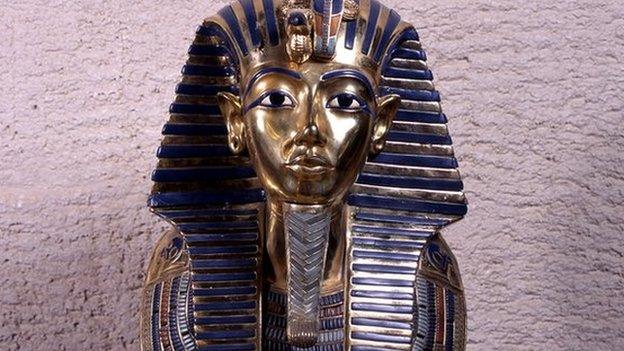Egypt extracts torso of 'Pharaoh Ramses II' statue from mud
- Published
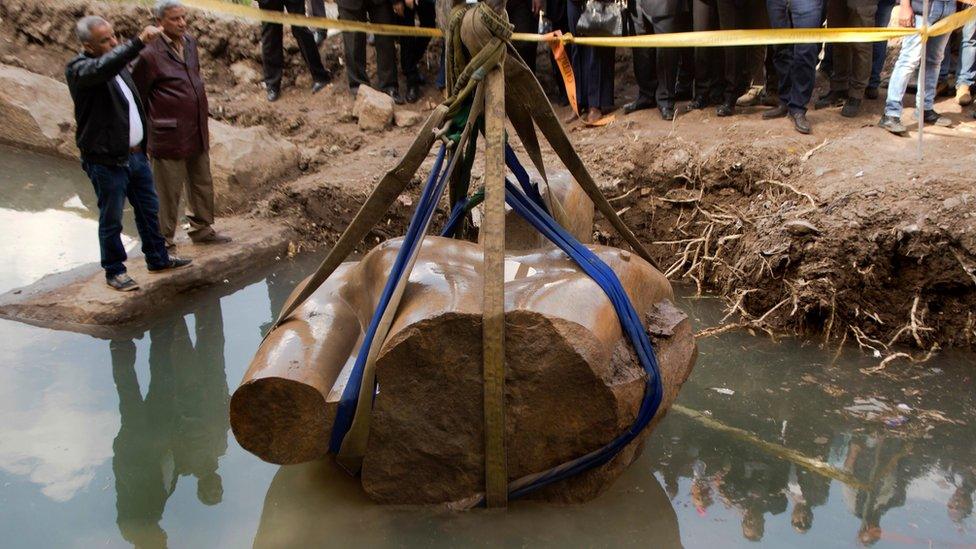
The statue was found in wasteland inbetween apartment blocks on the site of the ancient capital, Heliopolis
The torso of a huge statue, possibly 3,000 years old, has been lifted from the ground in Egypt. It could depict a famous pharaoh.
The statue's giant head and other fragments were extracted from the same site last week.
The relics were found in the north-east of Cairo, close to the temple of Ramses II, also known as Ramses the Great, and experts believe it may represent him.
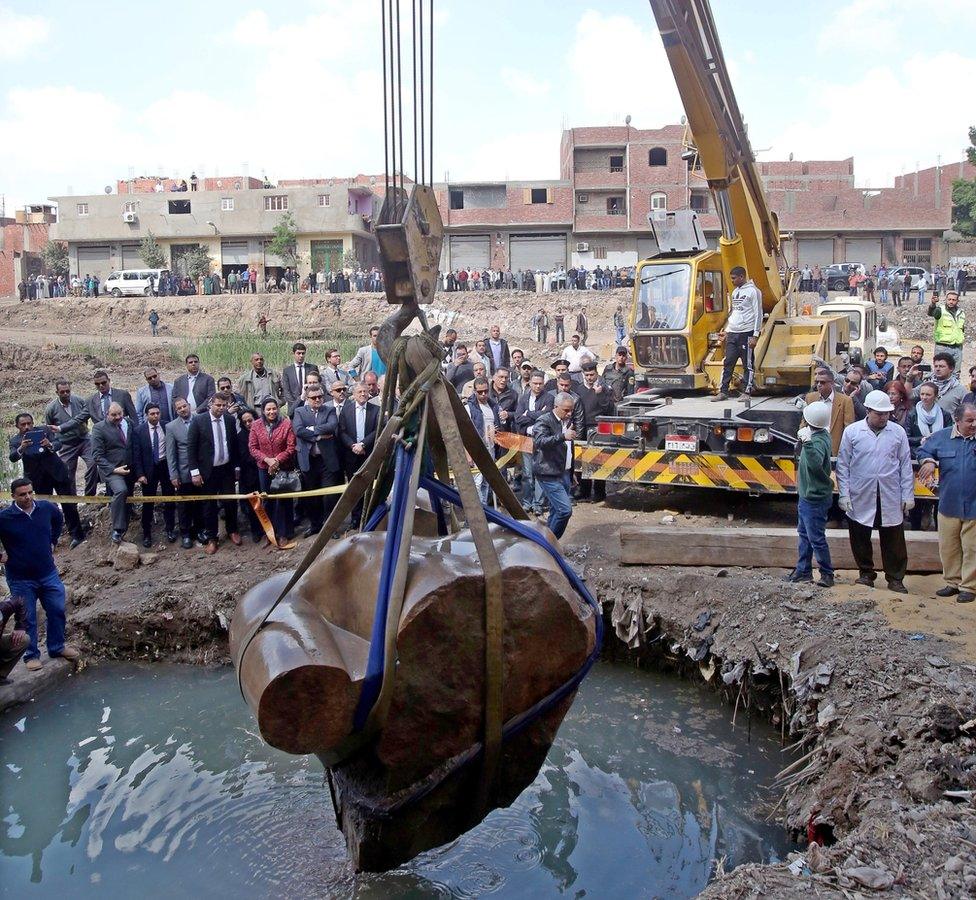
Part of the torso was hauled out from deep muddy groundwater using a crane on Monday
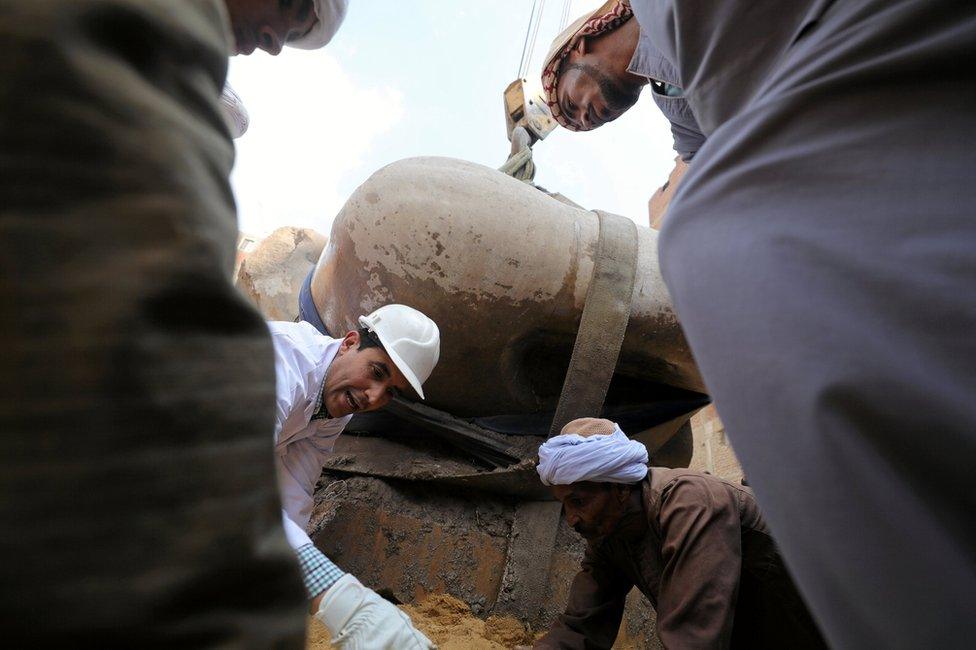
The Ministry of Antiquities said the statue's parts would be moved and assembled at the Egyptian museum in central Cairo. It's hoped that it will be possible to put the two large pieces together.
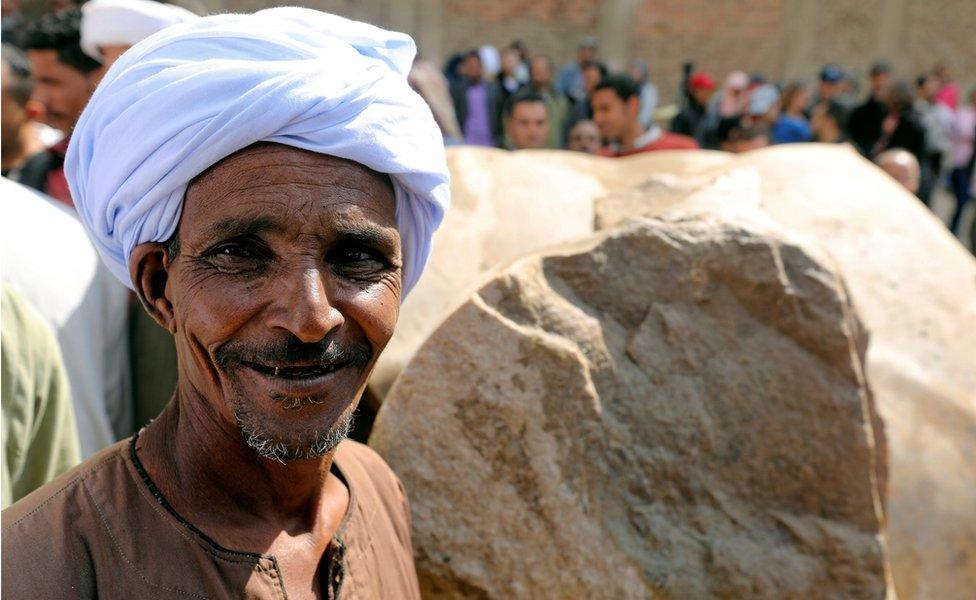
The figure is made out of quarzite

Residents close to where the statue was found cheer its excavation - one leading Egyptologist said if it proved to be original, rather than a later reworking to resemble Ramses II, it would prove to be a significant find
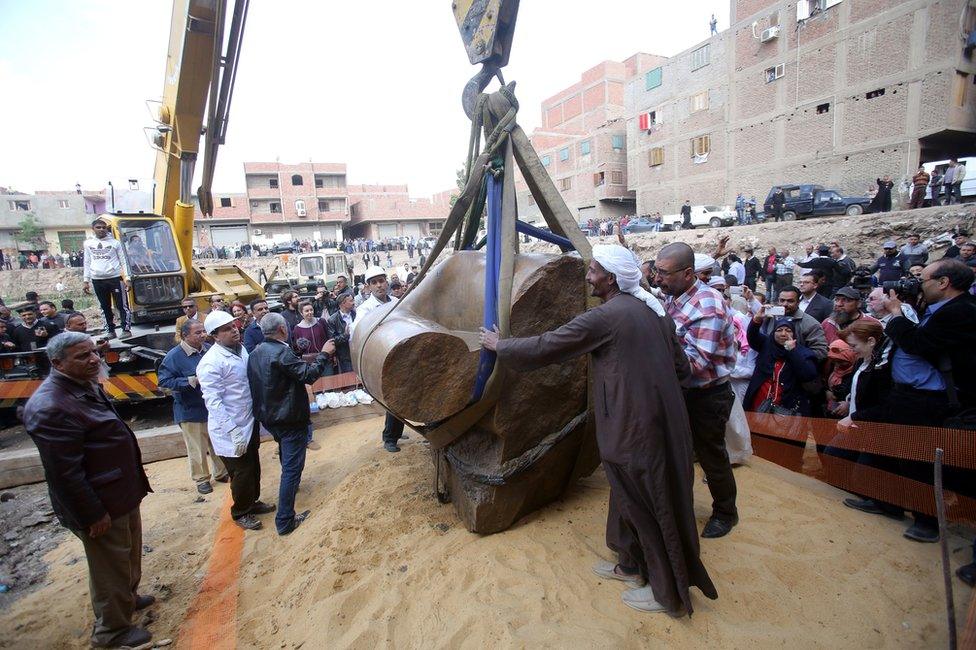
Found last week by an Egyptian-German archaeological team, the statue weighs three tonnes - excavation will finish on Tuesday
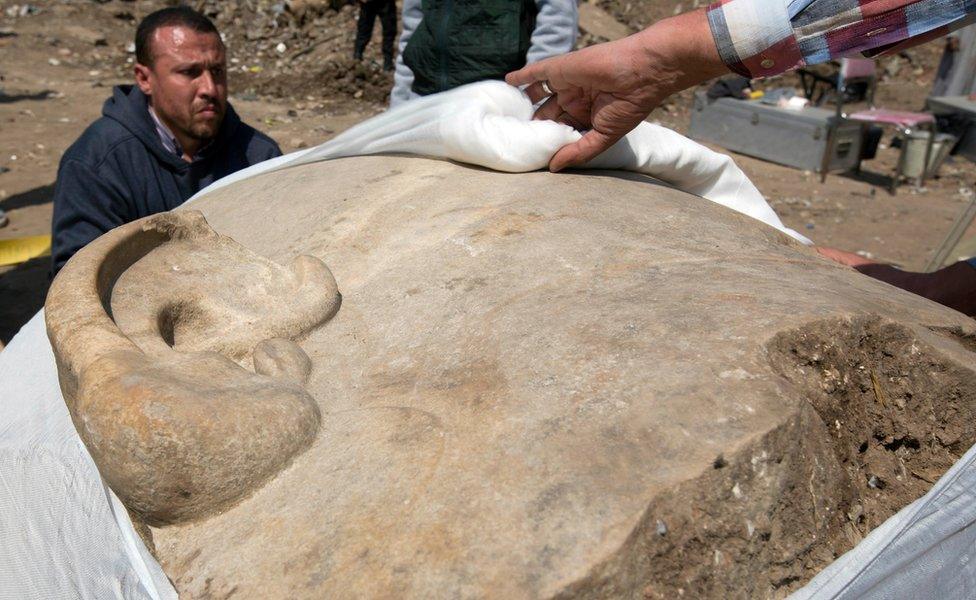
Another part of a statue - a large head - was extracted on Thursday last week
- Published9 March 2017
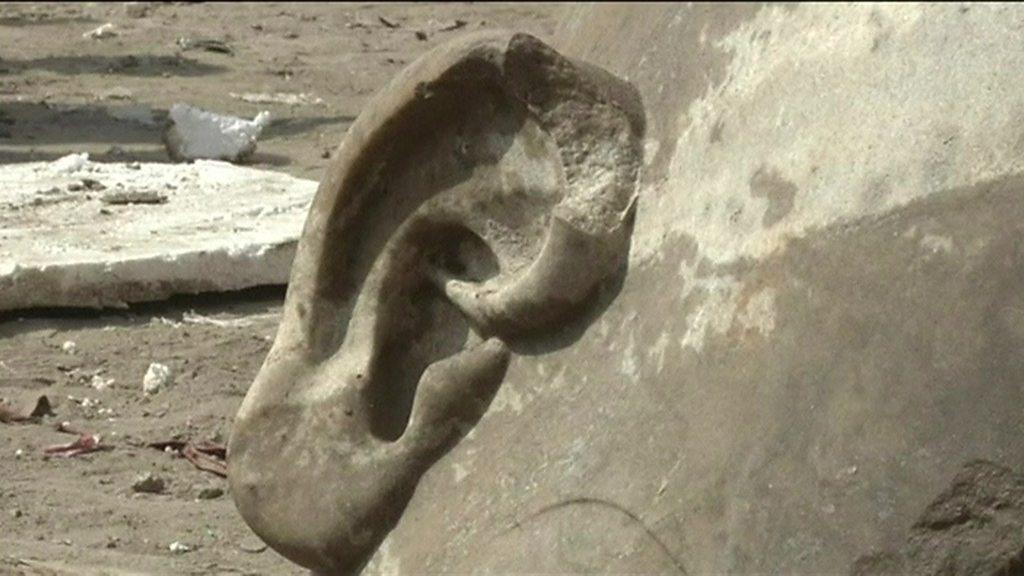
- Published19 February 2015

- Published22 January 2015
